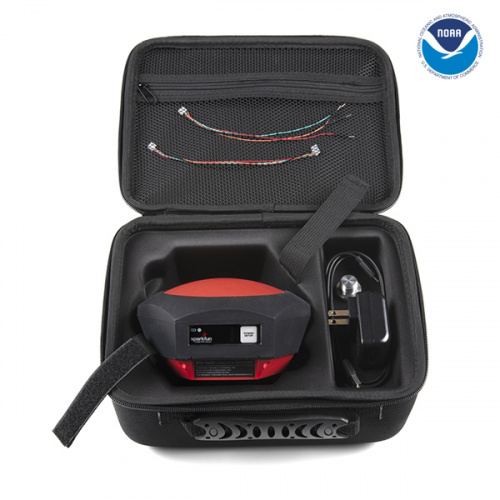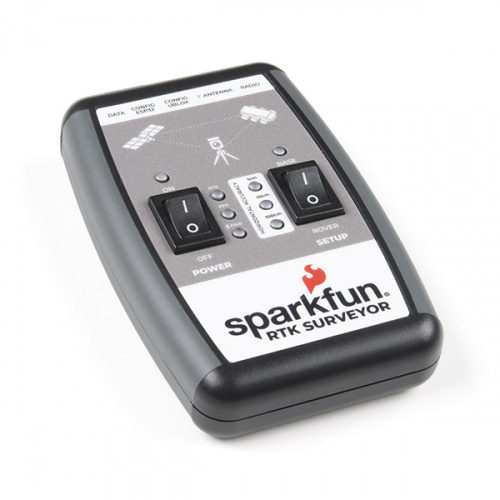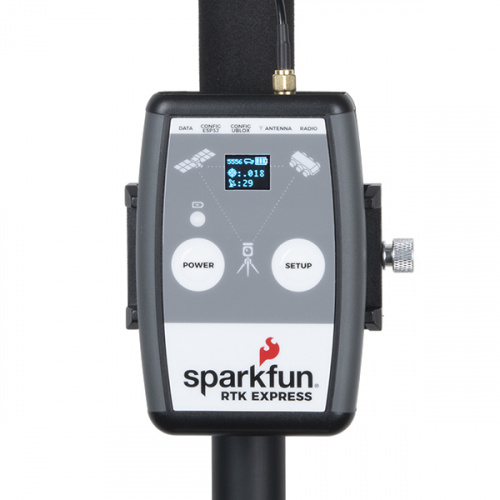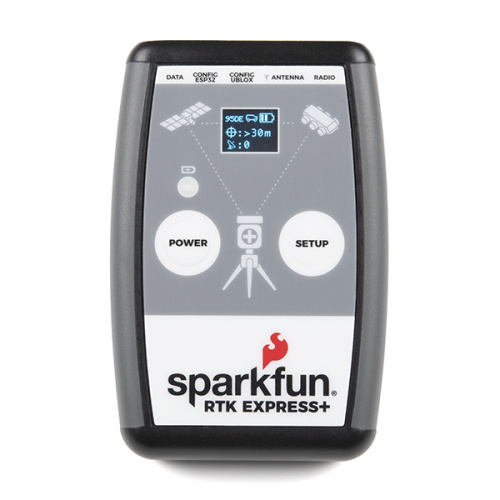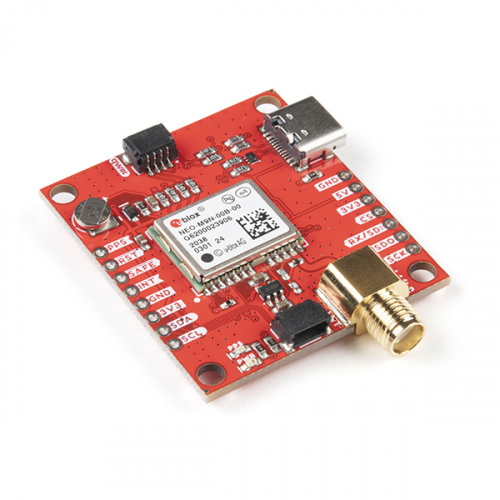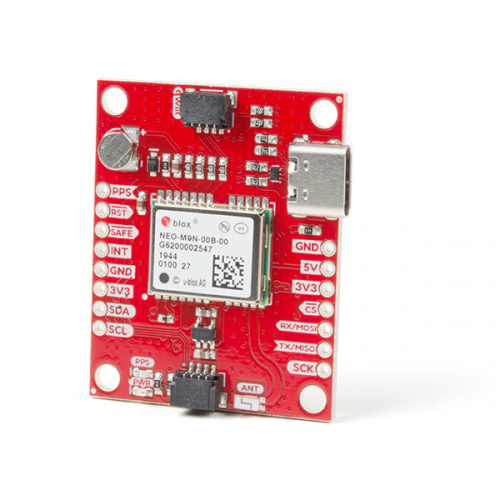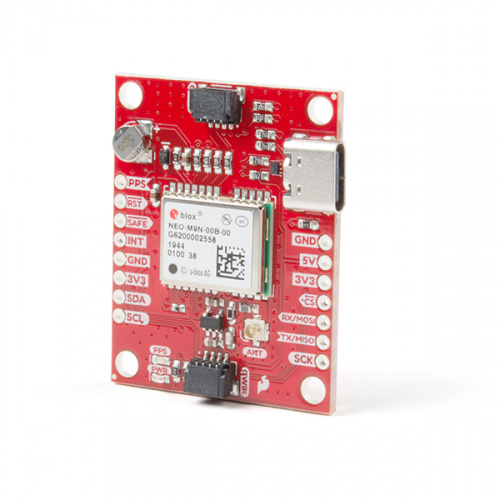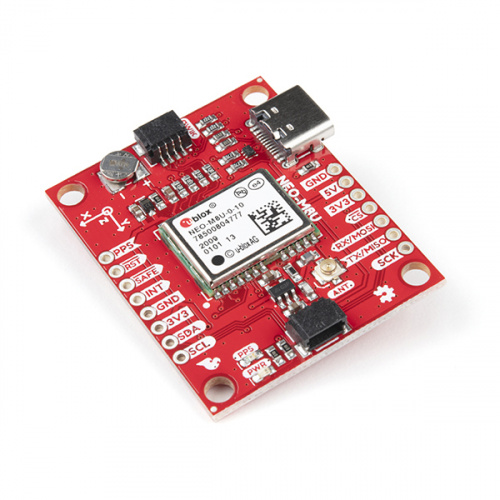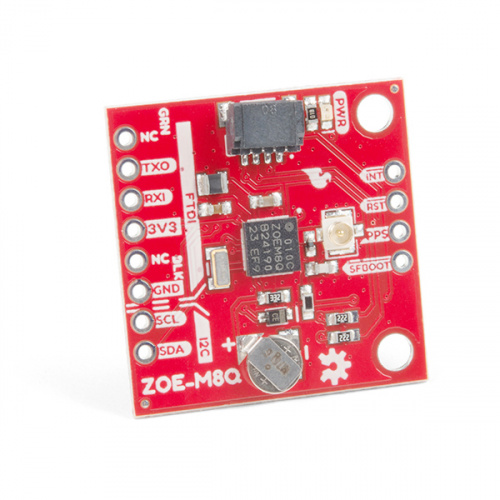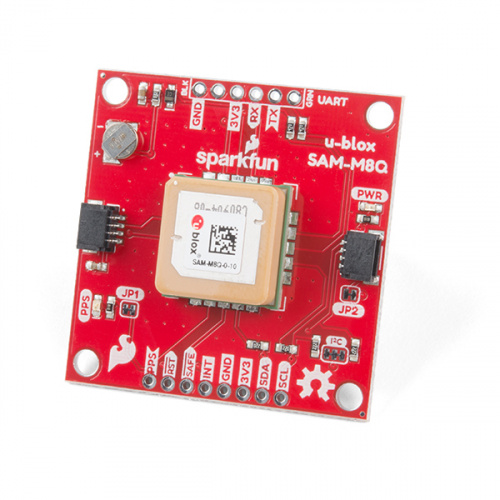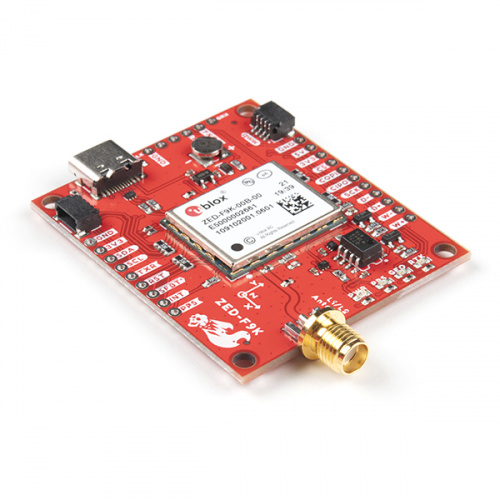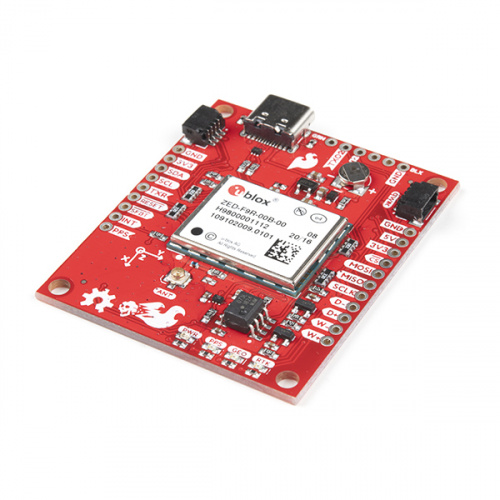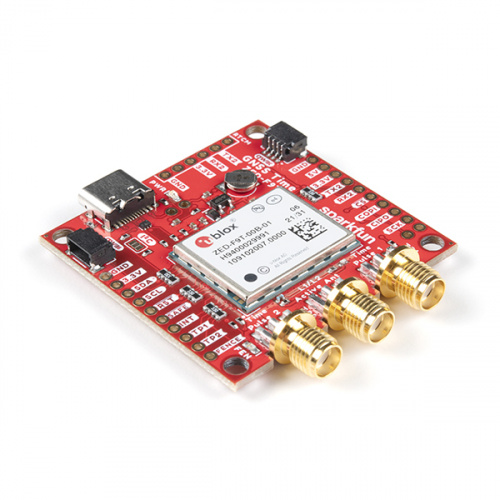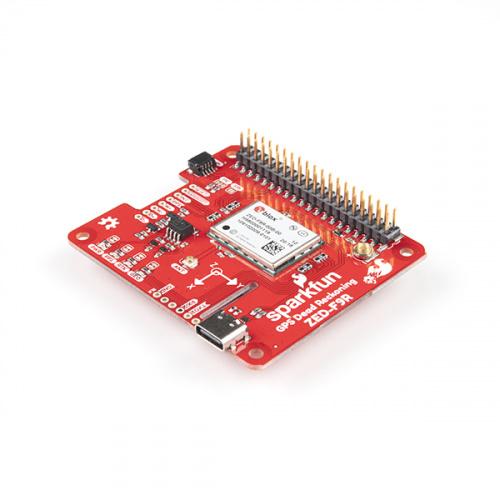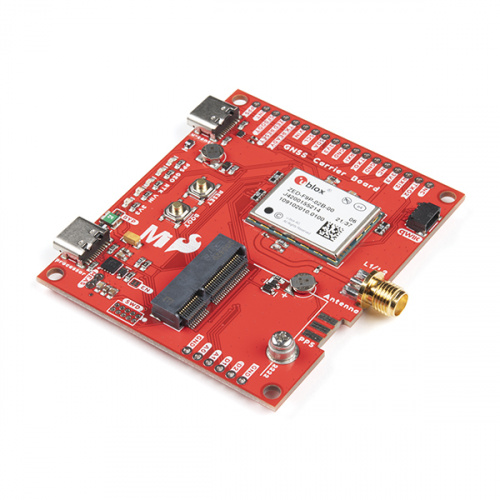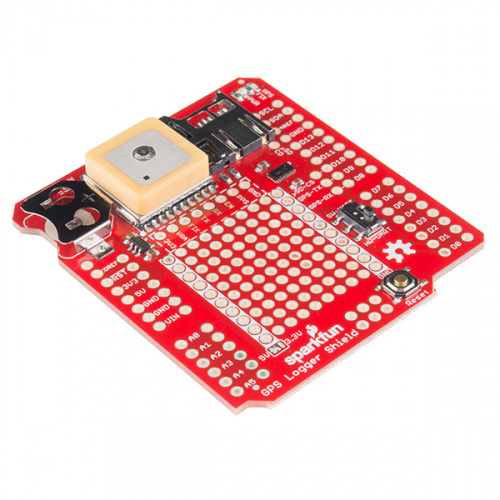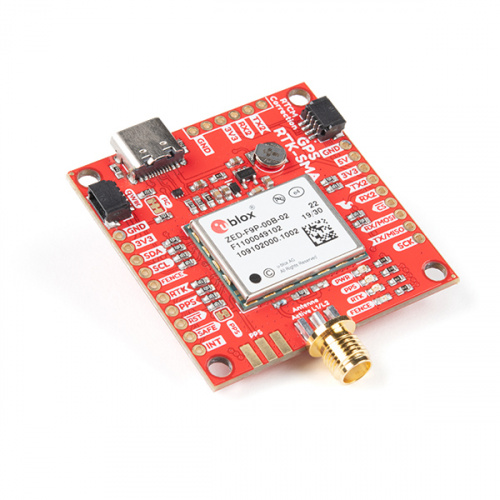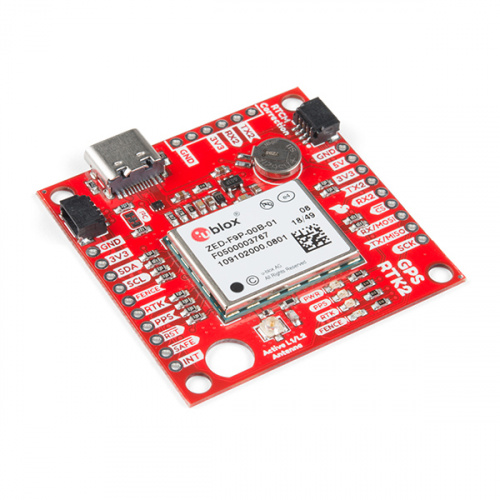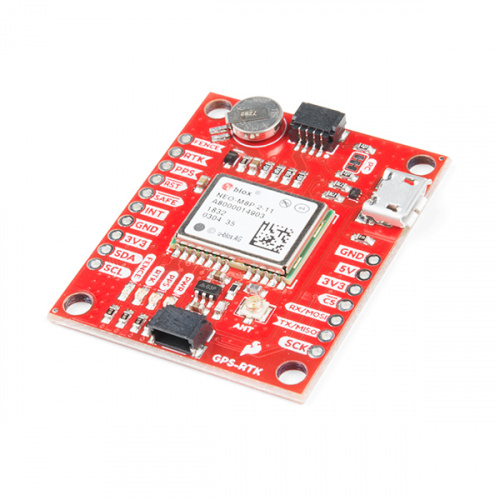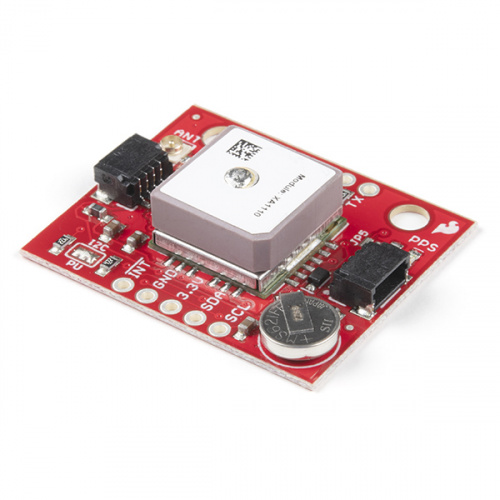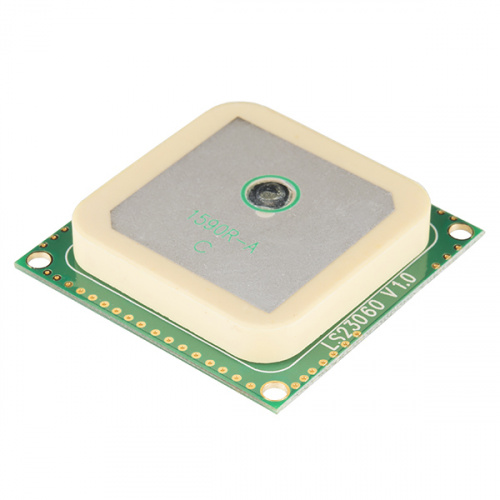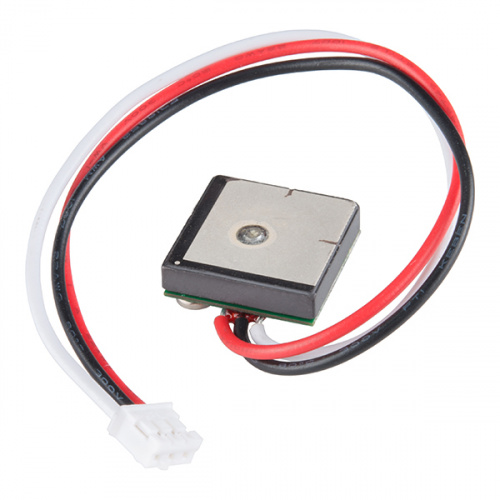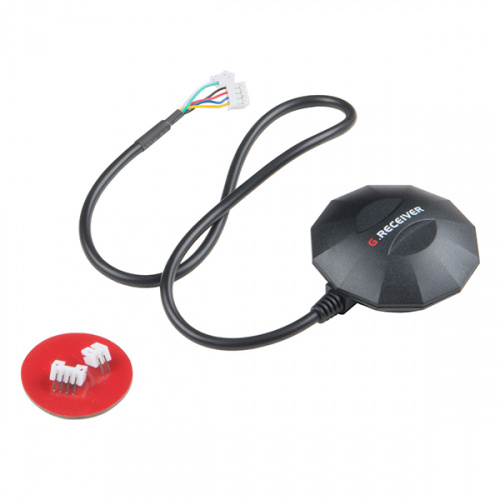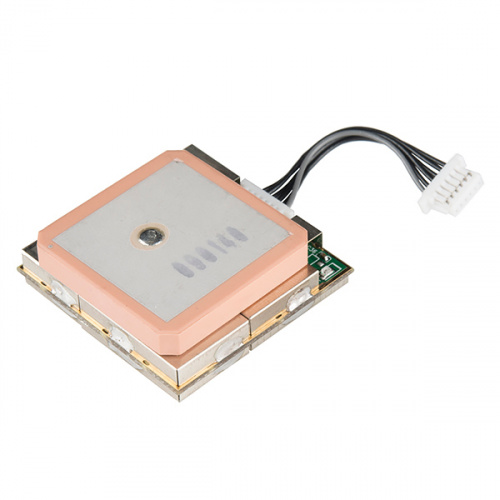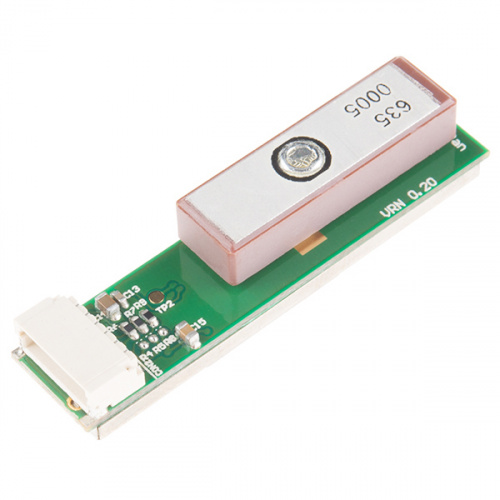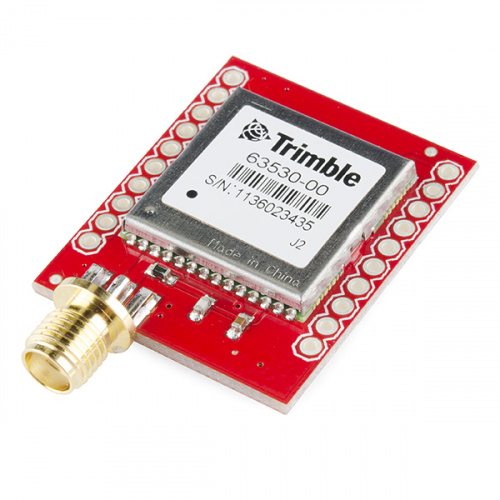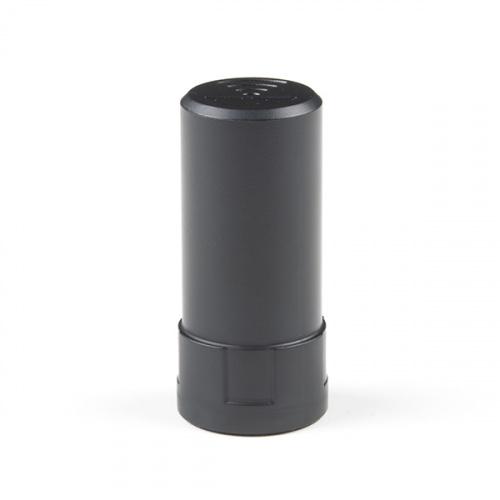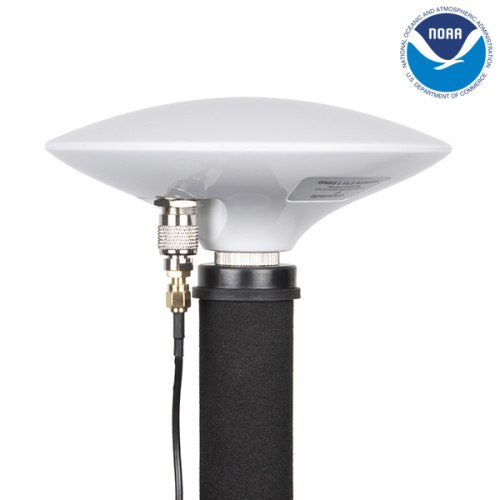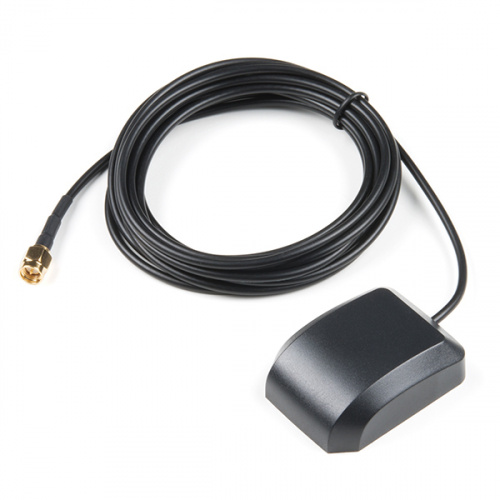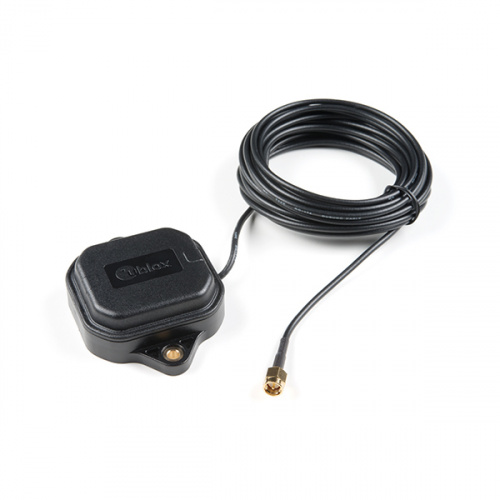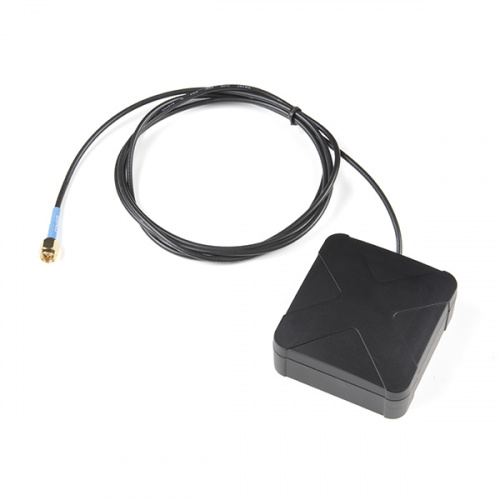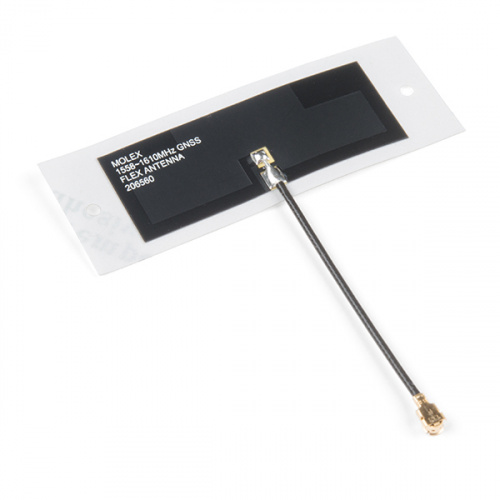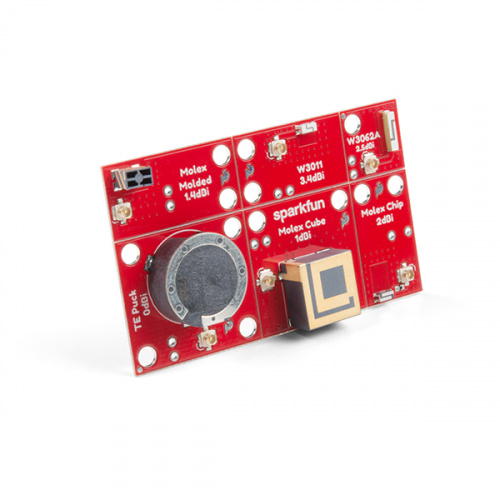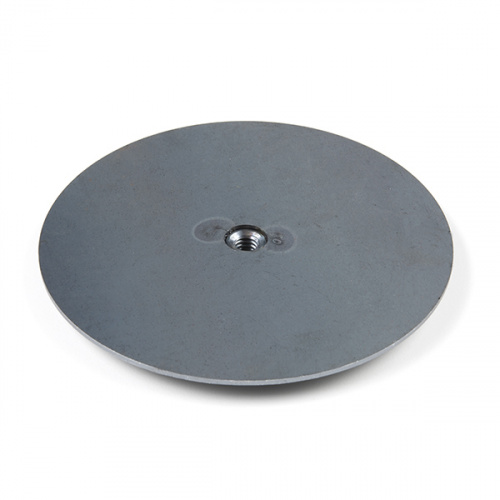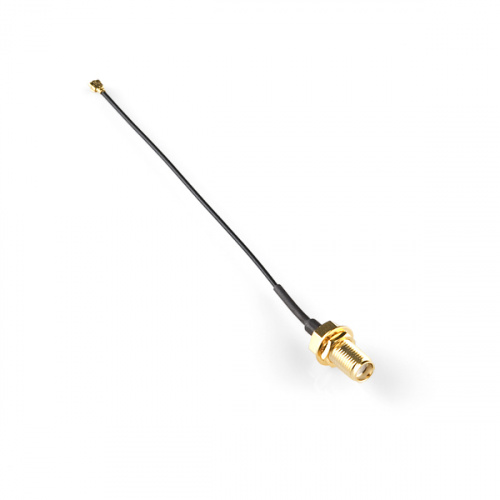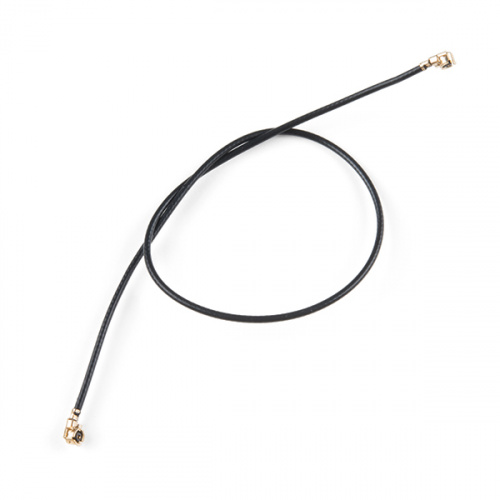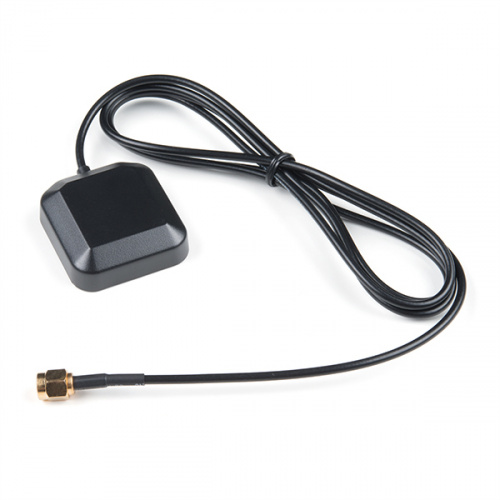GPS/GNSS Buying Guide
There are a lot of options when it comes to GPS and GNSS hardware so it can be hard to just pick one and start logging locations. The size, update rate, power requirements, these are all features that you'll want to look into before you choose which hardware is right for your project.
Size
This is something you need to consider if your project is supposed to be pocket-sized. GPS and GNSS modules are getting ever-smaller (Your tiny, tiny cell phone has one in it!) but remember that in general, the antenna has to shrink to fit the module which will affect things like lock time and accuracy.
Update Rate
The update rate of a GPS or GNSS module is basically how often it recalculates and reports its position. The standard for most devices is 1Hz (Only once per second). The fact is, unless you're on an airplane or something, you're probably not going fast enough to have changed position significantly in the past second. However, UAVs and other flying or fast vehicles may require faster update rates to stay on track. 5 and even 10Hz update rates are becoming more and more available for cheap. Keep in mind, though, that a fast update rate means that there's more NMEA sentences flying out of the module, some microprocessors will be quickly overwhelmed trying to parse that much data. On the plus side, if you have a module that runs at 5 or 10Hz, it can usually be configured to run at an easier pace.
Power Requirements
If someone asked you to crunch a bunch of numbers that you had to get from satellites in orbit around the Earth and use that information to figure out where you were, you'd flat out refuse. It's a lot of work, and yet that's exactly what these tiny GPS/GNSS units are doing (multiple times per second!) so they can use a lot of power. On average, around 30mA at 3.3V. Keep in mind, also, that GPS antennas usually enlist the help of an amplifier that draws extra power. If a unit appears to have super-groovy-low power consumption, make sure there's an antenna attached.
Number of Channels
Even though there are only so many GPS/GNSS satellites in view at any given time, the number of channels that your module runs will affect your time to first fix. Since the module doesn't know which satellites are in view, the more frequencies that you can check at once, the faster you'll find a fix. After you get a lock, some modules will shut down the extra blocks of channels to save power. If you don't mind waiting a little longer for a lock, 12 or 14 channels will work just fine for tracking.
Antennas
Many modules come with this chunk of something on top of it. What is that? That is a precisely made chunk of ceramic. Each antenna is finely trimmed to pickup the GPS L1 frequency of 1.57542 GHz. Sound expensive? Well, they make a lot of them. There are some other GPS antenna technologies (chip, helical), but they are not as common, a bit more expensive, and require significantly more amplification and filtering.
Oh hey - as I mentioned, the satellites are in the sky like... 12,552 miles above you, so be sure and point the ceramic towards the sky, ok? GPS and GNSS antennas are getting better, and you can certainly get a signal indoors, but it's hit-or-miss. I hear there are reception problems in the urban canyons of places like New York City. If you can get near a window - it will help a lot.
Accuracy
How accurate is GPS and GNSS? Well it varies a bit, but you can usually find out where you are, anywhere in the world, within 30 seconds, down to +/- 10m. Amazing! I say +/- because it can vary between modules, time of day, clarity of reception, etc. Most modules can get it down to +/-3m, but if you need sub meter or centimeter accuracy, it gets really expensive. I've heard stories of such fabled receivers, but I have never gotten to touch one. Someone please prove us wrong.
What is GNSS?
So you’re wondering what the difference is between GPS and GNSS? Good news, you’re not alone and you’ve come to the right place! The topic of GPS vs GNSS can be confusing for many people. The main reason for this is that in the US, we tend to use a specific GNSS called GPS. You can learn more in our article explaining each of the world's geospatial satellite constellations!
Enclosed GPS/GNSS Devices
SparkFun RTK Facet
Start Time
Cold: 25 sec, Hot: 2 sec
Update Rate
25Hz Max
Antenna
Internal L1/L2 w/ ≥5dBi gain
Dimensions
136mm x 146mm x 80mm
Protocol
NMEA and UBX
Power Requirements
Internal 6Ah LiPo Battery (Included)
Bonus Features
Enclosed Facet Design, ESP32 WROOM Bluetooth® Tranceiver, Embedded OLED, 802.11 BGN WiFi, Single Push Button Control, Qwiic Connectors, USB-C, microSD, and more.
SparkFun RTK Surveyor
Start Time
Cold: 25 sec, Hot: 2 sec
Update Rate
25Hz Max
Antenna
SMA
Dimensions
118mm x 79mm x 30mm
Protocol
NMEA and UBX
Power Requirements
Internal 1000mAh LiPo Battery (Included)
Bonus Features
Kit Available, Enclosed Design, ESP32 WROOM Bluetooth® Tranceiver, 802.11 BGN WiFi, Rocker Switch Control, Qwiic Connectors, USB-C, microSD, and more.
SparkFun RTK Express
Start Time
Cold: 25 sec, Hot: 2 sec
Update Rate
25Hz Max
Antenna
SMA
Dimensions
132mm x 101mm x 32mm
Protocol
NMEA and UBX
Power Requirements
Internal 1300mAh LiPo Battery (Included)
Bonus Features
Kit Available, Enclosed Design, ESP32 WROOM Bluetooth® Tranceiver, 802.11 BGN WiFi, Push Button Control, Embedded OLED, Qwiic Connectors, USB-C, microSD, and more.
SparkFun RTK Express Plus
Start Time
Cold: 25 sec, Hot: 2 sec
Update Rate
25Hz Max
Antenna
SMA
Dimensions
132mm x 101mm x 32mm
Protocol
NMEA and UBX
Power Requirements
Internal 1300mAh LiPo Battery (Included)
Bonus Features
Kit Available, Enclosed Design, ESP32 WROOM Bluetooth® Tranceiver, 802.11 BGN WiFi, Push Button Control, Built In IMU, Dead Reckoning, Embedded OLED, Qwiic Connectors, USB-C, microSD, and more.
GPS/GNSS Breakout Boards
SparkFun GPS Breakout - NEO-M9N, SMA (Qwiic)
Start Time
Cold: 24 sec, Hot: 2 sec
Update Rate
25Hz Max (4 concurrent GNSS)
Antenna
SMA
Dimensions
40.64mm x 36.83mm
Protocol
NMEA, UBX, and RTCM over UART or I2C
Power Requirements
3.3VCC and I/O, ~31mA
Bonus Features
Qwiic Connectors, USB-C
SparkFun GPS Breakout - NEO-M9N, Chip Antenna (Qwiic)
Start Time
Cold: 24 sec, Hot: 2 sec
Update Rate
25Hz Max (4 concurrent GNSS)
Antenna
Chip
Dimensions
40.64mm x 33.02mm
Protocol
NMEA, UBX, and RTCM over UART or I2C
Power Requirements
3.3VCC and I/O, ~31mA
Bonus Features
Qwiic Connectors, USB-C
SparkFun GPS Breakout - NEO-M9N, U.FL (Qwiic)
Start Time
Cold: 24 sec, Hot: 2 sec
Update Rate
25Hz Max (4 concurrent GNSS)
Antenna
U.FL connector for use of antenna of your choice
Dimensions
40.64mm x 33.02mm
Protocol
NMEA, UBX, and RTCM over UART or I2C
Power Requirements
3.3VCC and I/O, ~31mA
Bonus Features
Qwiic Connectors, USB-C
SparkFun GPS Dead Reckoning Breakout - NEO-M8U (Qwiic)
Start Time
Cold: 26 sec, Hot: 1.5 sec
Update Rate
30Hz
Antenna
U.FL connector for use of antenna of your choice
Dimensions
42mm x 35mm
Protocol
NMEA, UBX, and RTCM over UART or I2C
Power Requirements
3.3V, 29mA
Bonus Features
Dead Reckoning, Built in Accelerometer & Gyroscope, Qwiic Connectors
SparkFun GPS Breakout - U.FL, ZOE-M8Q (Qwiic)
Start Time
Cold: 26 sec, Hot: 1 sec
Update Rate
18Hz
Antenna
External
Dimensions
25.25mm x 25.25mm
Protocol
NMEA, UBX, and 18Hz RTCM
Power Requirements
3.3V, 29mA
Bonus Features
Software Configurable, UART, I2C, High Sensitivity
SparkFun GPS Breakout - Chip Antenna, SAM-M8Q (Qwiic)
Start Time
Cold: 26 sec, Hot: 1 sec
Update Rate
18Hz
Antenna
External
Dimensions
41.35mm x 41.35mm
Protocol
NMEA, UBX, and 18Hz RTCM
Power Requirements
3.3V, 29mA
Bonus Features
Software Configurable, UART, I2C, High Sensitivity
SparkFun GNSS-RTK Dead Reckoning Breakout - ZED-F9K (Qwiic)
Start Time
Cold: 26 sec, Hot: 2 sec
Update Rate
Up to 30Hz
Antenna
SMA connector for use of antenna of your choice
Dimensions
61.0mm x 43.2mm
Protocol
NMEA, UBX, and RTCM over UART or I2C interfaces
Power Requirements
5V or 3.3V but all logic is 3.3V @ ~85mA to ~130mA (varies with constellations and tracking state)
Bonus Features
Dead Reckoning, Receives both L1C/A and L2C Bands, ~0.2 meter accuracy, Built-In Accelerometer and Gyroscope, RTC, USB-C, Qwiic Connector
SparkFun GPS-RTK Dead Reckoning Breakout - ZED-F9R (Qwiic)
Start Time
Cold: 24 sec, Hot: 2 sec
Update Rate
Up to 30Hz
Antenna
U.FL connector for use of antenna of your choice
Dimensions
52mm x 44mm
Protocol
NMEA, UBX, and RTCM over UART or I2C interfaces
Power Requirements
5V or 3.3V but all logic is 3.3V @ ~85mA to ~130mA (varies with constellations and tracking state)
Bonus Features
Dead Reckoning, Receives both L1C/A and L2C Bands, Built-In Accelerometer and Gyroscope
SparkFun GNSS Timing Breakout - ZED-F9T (Qwiic)
Start Time
Cold: 24 sec, Hot: 2 sec
Update Rate
Up to 20Hz
Antenna
3x SMA connectors for the antenna and timing pulse signals
Dimensions
52mm x 44mm
Protocol
NMEA, UBX, RRLP, and RTCM
Power Requirements
5V or 3.3V but all logic is 3.3V @ ~68mA - ~130mA (varies with constellations and tracking state)
Bonus Features
Five nanosecond timing accuracy, supports L1/L2/E5b bands, USB-C, Qwiic connectors
SparkFun GPS-RTK Dead Reckoning pHAT for Raspberry Pi
Start Time
Cold: 24 sec, Hot: 2 sec
Update Rate
Up to 30Hz
Antenna
U.FL connector for use of antenna of your choice
Dimensions
80mm x 70mm
Protocol
NMEA, UBX, and RTCM over UART
Power Requirements
5V or 3.3V but all logic is 3.3V @ ~85mA to ~130mA (varies with constellations and tracking state)
Bonus Features
Dead Reckoning, Receives both L1C/A and L2C Bands, Built-In Accelerometer and Gyroscope, Raspberry Pi pHAT
SparkFun MicroMod GNSS Carrier Board (ZED-F9P)
Start Time
Cold: 27 sec, Hot: 2 sec
Update Rate
Up to 25Hz
Antenna
SMA connector for use of antenna of your choice
Dimensions
66.04mm x 56.89mm
Protocol
NMEA, UBX, and RTCM
Power Requirements
5V or 3.3V but all logic is 3.3V @ ~85mA to ~130mA (varies with constellations and tracking state)
Bonus Features
Receives both L1C/A and L2C Bands, MicroMod M.2 connector, RTC w/ 1mAh battery back up, USB-C, Qwiic connector
SparkFun GPS Logger Shield
Start Time
Cold: 35 sec, Hot: 1 sec
Update Rate
Up to 10Hz
Antenna
Internal
Dimensions
Standard R3 Format
Protocol
NMEA
Power Requirements
5V or 3.3V but all logic is 3.3V, 12mm Coin Cell Battery
Bonus Features
Arduino R3 Form Factor, Prototyping Area, microSD Slot
SparkFun GPS-RTK-SMA Breakout - ZED-F9P (Qwiic)
Start Time
Cold: 25 sec, Hot: 2 sec
Update Rate
25Hz
Antenna
SMA
Dimensions
43.5mm x 43.2mm
Protocol
NMEA, UBX
Power Requirements
5V or 3.3V, 35mA
Bonus Features
Receives both L1C/A and L2C Bands, SMA connector for advanced antenna options
SparkFun GPS-RTK2 Board - ZED-F9P (Qwiic)
Start Time
Cold: 25 sec, Hot: 2 sec
Update Rate
25Hz
Antenna
External
Dimensions
43.5mm x 43.2mm
Protocol
NMEA, UBX
Power Requirements
3.3V, 35mA
Bonus Features
Receives both L1C/A and L2C Bands
SparkFun GPS-RTK Board - NEO-M8P-2 (Qwiic)
Start Time
Cold: 29 sec, Hot: 1 sec
Update Rate
10Hz
Antenna
External
Dimensions
40.6mm x 33mm
Protocol
NMEA, UBX, RTCM
Power Requirements
3.3V, 35mA
Bonus Features
Accuracy close to 1inch
SparkFun GPS Breakout - XA1110 (Qwiic)
Start Time
Cold: 15 sec, Warm: 5 sec, Hot: 1 sec
Update Rate
10Hz
Antenna
Built-In & External
Dimensions
30.48mm x 25.4mm
Protocol
NMEA, MediaTek Binary
Power Requirements
3.3V, 25mA
SparkFun Artemis Global Tracker
Start Time
Cold: 26 sec, Hot: 1 sec
Update Rate
18Hz
Antenna
SMA
Dimensions
90mm x 85mm x 30mm
Protocol
NMEA, UBX, and 18Hz RTCM
Power Requirements
3.3V, 36mA (via USB-C, LiPo, or Solar Panel)
Bonus Features
Integrated BLE radio and antenna, Iridium 9603N Satellite Transceiver, MS8607 PHT Sensor, Qwiic Connector, LiPo Charger
GPS Receiver - LS20031 5Hz (66 Channel)
Start Time
Cold: 15 sec, Hot 1 sec
Update Rate
5Hz
Antenna
Built-In
Dimensions
30x30x5mm
Protocol
NMEA
Power Requirements
3.3V, 41mA
GPS Receiver - GP-20U7 (56 Channel)
Start Time
Cold: 29 sec, Warm: 28 sec, Hot: 8 sec
Update Rate
1Hz
Antenna
Built-In
Dimensions
18.4mm x 18.4mm x 4mm
Protocol
NMEA, UBX
Power Requirements
3.3V, 40mA
GPS Mouse - GP-808G (72 Channel)
Start Time
Cold: 36 sec, Warm: 25 sec, Hot: 1 sec
Update Rate
10Hz
Antenna
Built-In
Dimensions
52 x 52 x 20.5 mm
Protocol
NMEA, UBX
Power Requirements
3.3-5V, 40mA
GPS Receiver - EM-506 (48 Channel)
Start Time
Cold: 35 sec, Hot: 1 sec
Update Rate
1Hz
Antenna
Built-In
Dimensions
30x30x10.7mm
Protocol
NMEA, SiRF
Power Requirements
4.5-6V, 45-55mA
Bonus Features
Extremely High Sensitivity: -163dBm
GPS Receiver - GP-735 (56 Channel)
Start Time
Cold: 29 sec, Warm: 28 sec, Hot: 8 sec
Update Rate
10Hz
Antenna
Built-In
Dimensions
35 x 8 x 6.5 mm
Protocol
NMEA
Power Requirements
3.3-5V, 37mA
SparkFun GPS Module - Copernicus II DIP (12 Channel)
Start Time
Cold: 38 sec, Hot 3 sec
Update Rate
1Hz
Antenna
External
Dimensions
31.8x27.4x14mm
Protocol
NMEA
Power Requirements
3.3V, 44mA
Bonus Features
Standalone Module Available
GPS/GNSS Antennas
GNSS Multi-Band L1/L2 Helical Antenna (SMA) BT-560
Weight
15.9g
Size
27.3mm x 58.6mm
Terminal Connector
SMA
Constellations
GPS, GLONASS, Galileo, and BeiDou
Power Requirements
3-18V, ≤50mA
Bonus Features
Picks up both L1 and L2 bands
GNSS Multi-Band L1/L2 Surveying Antenna (TNC) - TOP106
Weight
335g
Size
148mm x 55mm
Terminal Connector
Female TNC
Constellations
GPS, GLONASS, Galileo, and BeiDou
Power Requirements
3.3-12V, ≤45mA
Bonus Features
Picks up both L1 and L2 bands, Waterproof IP67, Standard 5/8"-11TPI
GPS/GNSS Magnetic Mount Antenna - 3m (SMA)
Weight
75g including 3m cable
Size
50x38x17mm
Terminal Connector
SMA
Constellations
GPS/GLONASS
Power Requirements
3-5V, 10mA
GNSS Multi-Band Magnetic Mount Antenna - 5m (SMA)
Weight
175g (including cable)
Size
60.0mm x 82.0mm x 22.5mm
Terminal Connector
SMA
Constellations
GPS, GLONASS, Galileo, and BeiDou
Power Requirements
—
Bonus Features
Picks up both L1 and L2 bands
MagmaX2 Active Multiband GNSS Magnetic Mount Antenna - AA.200
Weight
160g (including cable)
Size
63.2mm x 67.2mm x 26.5mm
Terminal Connector
SMA
Constellations
GPS, GLONASS, Galileo, and BeiDou
Power Requirements
1.8-5.5V @ ~18mA
Bonus Features
Picks up L1/L2/L5, G1/G2/G5, E1/E5a/E5b, and B1/B2 bands, Waterproof IP67, 1.5m cable
Molex Flexible GNSS Antenna - U.FL (Adhesive)
Weight
0.466g
Size
Antenna: 40.40mm x 15.40mm, Adhesive Pad: 56.40mm x 20mm
Terminal Connector
U.FL
Constellations
GPS, GLONASS, Galileo, and BeiDou
Power Requirements
-
Bonus Features
0.1mm thick, 50m cable
SparkFun GNSS Chip Antenna Evaluation Board
Weight
7.4g
Size
60.96 x 25.4mm
Terminal Connector
—
Constellations
GPS, GLONASS, Galileo, and BeiDou
Power Requirements
—
GPS Antenna Ground Plate
Weight
191g
Size
101.6mm x 6.35mm thickness
Terminal Connector
—
Constellations
—
Power Requirements
—
Interface Cable SMA to U.FL
Weight
4g
Size
101.6mm
Terminal Connector
SMA
Constellations
—
Power Requirements
—
U.FL to U.FL Mini Coax Cable - 200mm
Weight
3.04g
Size
200 mm length x 1.25mm diameter
Terminal Connector
U.FL on both ends
Constellations
—
Power Requirements
—
RockBLOCK External Patch Antenna
Weight
43.36g
Size
40.5mm x 38mm x 12.3mm
Terminal Connector
SMA
Constellations
—
Power Requirements
—
